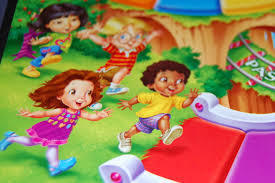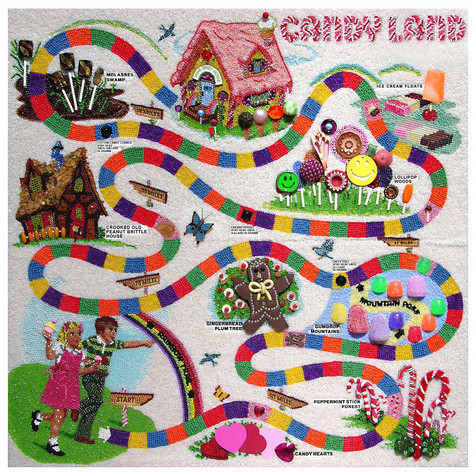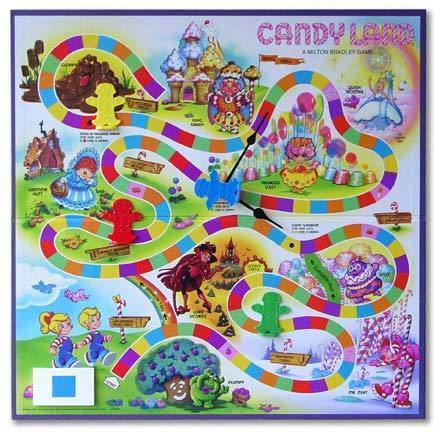This Post Makes Me Hungry…And Sad.
A reader on Facebook commented on how the imagery on the board game Candyland has changed over the years. I sometimes bring that up when I give talks but since I’ve got your attention, let’s just take a peek together, shall we? Here is the original Candyland, circa 1949.
Yum. Here is the game in 1978:
I dreamed of those ice cream floats….
Things begin to change more significantly in the 1980s. That’s when Candyland ditched the Dick-and-Jane outfits for generic his-and-hers overalls:
They also added some friendly candy characters: Plumpy with his plum tree, Mr. Candy Cane, Gramma Nutt, Princess Lolly, Queen Frostine. More on some of them in a moment.
Then we hit 2010. On the upside, Milton Bradley finally recognized, at least in some versions, that there are children who are not white and blonde (nothing against blonde white kids–I was one myself–I’m just saying):

Beyond that, though…Yikes! Check out today’s board!

In case you can’t see it: here’s the new Princess Lolly:

And Queen Frostine turned into a Bratz doll:

Stuff changes. I know that. What played in 1949 is not going to play in 2013. Still, when the changes are all about skinny and pretty (and exponentially larger portion sizes–there’s a mixed message for you) you have to be leery. In addition to those characters, the game pieces themselves have slimmed down, Gramma Nutt has been replaced by the more fashionable Gramma Gooey (who has definitely had some work done) and Mr. Candy Cane has been replaced by some guy–maybe a prince?–whose giant muscles are only exceeded by the size of his triple-decker ice cream cone.
I’ve written before about other classic toys that have, without our notice, had skinny makeovers. When our kids play with toys that we played with we assume that they are the same toys. It’s kind of back to the Disney Princess thing–I watched “Cinderella” as a kid, so what’s the big deal? The big deal is that it’s not the same at all. It just has the same name. And the images our kids–boys and girls–are exposed to from the youngest ages are so distorted and so often sexualized (I mean, hubba-hubba Queen Frostine!) that it is no wonder that girls are self-sexualizing ever earlier.
I think a lot about something that Gary Cross, an historian of childhood, once told me: that toys traditionally have communicated to children our expectations of their adult roles. What are we telling girls we expect of them with this?
Peggy Orenstein's Blog
- Peggy Orenstein's profile
- 722 followers






